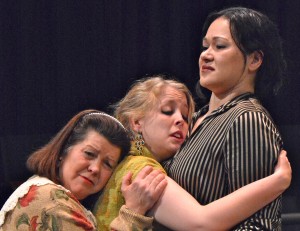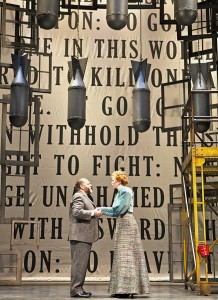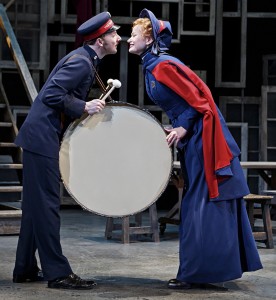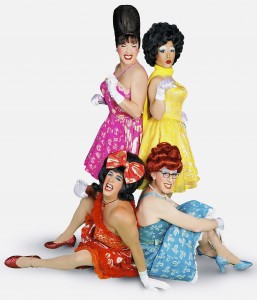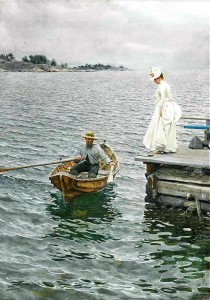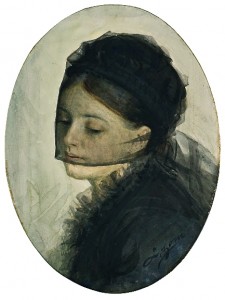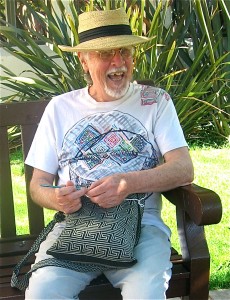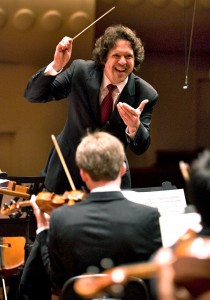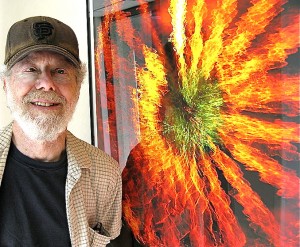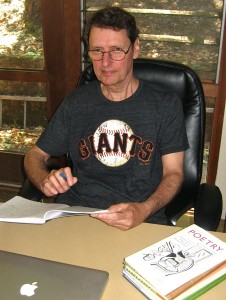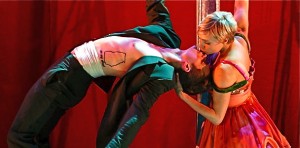Woody’s [rating:3]
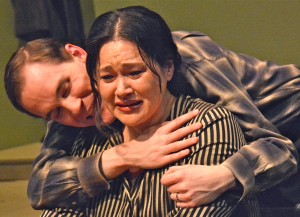
Clay (Justin Gillman) consoles his wife, Kelly (Karen Offereins), in “The Pain and the Itch.” Photo by Jay Yamada.
I feel like a nine-year-old boy who’s found a crisp new $100 bill on the sidewalk.
Reveling in discovery.
I’ve never been to the Gough St. Playhouse before, but I’ve obviously missed out on a lot if “The Pain and the Itch” is a typical example of what the CustomMade Theatre Company produces there.
“Pain,” a mega-black comedy by Bruce Norris, Pulitzer Prize-winning writer of “Claybourne Park,” proffers a Thanksgiving meal piled high with biting insights into faux family values, racism, hypocrisy, wealth, dementia, a negligent death and, maybe, pedophilia.
When a financially comfortable, liberal, ultra-judgmental and phony family gathers for a Thanksgiving meal in New York, its members and hangers-on munch on Brussels sprouts and long festering resentments.
Norris unhurriedly peels the skin off the family’s smugness as adroitly as if he were wielding a paring knife and onion.
He’s skillful in warding off an audience’s tears but doesn’t avoid the cringe factor as his characters attack each other in overt, sometimes cruel ways.
Sometimes “Pain” is shockingly funny.
Sometimes not so much, like when the wife forces the husband to euthanize a cat to create a hypoallergenic situation for a second child.
Norris’ main tool is flashback — an effective freeze-frame device for the most part, but occasionally jarring and confusing.
Both the playwright and director Dale Albright make good use of Mr. Hadid (Dorian Lockett), an African American cab driver, an observer/participant who usually sits on one sideline or another but sometimes asks seemingly oblique questions about the cost of things.
The play centers on the hysteria of Clay (Justin Gillman), a golf-playing, porn-addicted, emasculated house-husband whose young daughter, Kayla (Gabriella Jarvie), has a major genital rash of unknown but possibly creepy origin.
He’s preoccupied by an unseen entity that’s been gnawing at the family avocados.
Clay lives in a world of hyperbole (“Why don’t I just move out? Why don’t I go upstairs and hang myself?”).
His wife, Kelly (Karen Offereins), a standoffish lawyer who tries to hide her own pain behind a cloak of intellectuality, continually puts him down.
Her excuse?
She feels she’s been abused — by “sarcasm” and “neglect.”
Cash (Peter Townley), Clay’s self-centered plastic surgeon brother, the black sheep of the family because he’s a Republican, is involved with a bigoted, coarsely sexual 23-year-old émigré, Kalina (Eden Neuendorf), who’d been repeatedly raped in her native Eastern European country.
The brothers’ condescending, saccharine, baby-talking mother, Carol (Jean Forsman), is a socialist on the brink of dementia.
With the possible exception of Neuendorf, whose accent is so thick it makes some phrases impossible to make out, all the performers acquit themselves rather well. Especially considering that Norris’ words are so barbed and that the actors are asked to talk over each other with great frequency and volume.
“The Pain” isn’t quite as polished as “Claybourne Park,” which it pre-dated by six years. The nastiness in “Pain” verges, in fact, on mean-spirited and vicious.
Moreover, the play shows that Norris (himself Caucasian) is slightly obsessed with ridiculing the hypocrisy of rich, white folk.
Still, the show’s absolutely worth a look-see.
And so is the almost hidden CustomMade troupe, ensconced in a bright but intimate black-box theater with exceptionally comfy seats and dedicated to “producing plays that awaken our social conscience.”
Opening night, more than a few of those 55 seats were empty. That’s a crime: They certainly deserve to be filled for the entire run of the two-hour show.
“The Pain and the Itch” plays at the Gough St. Playhouse, 1620 Gough St. (in the basement of the Trinity Episcopal Church, at Bush), San Francisco, through Feb. 16. Performances Thursday through Saturday, 8 p.m.; Sunday, 7 p.m. Tickets: $22 to $35. Information: (415) 798-2682 or www.custommade.org.


